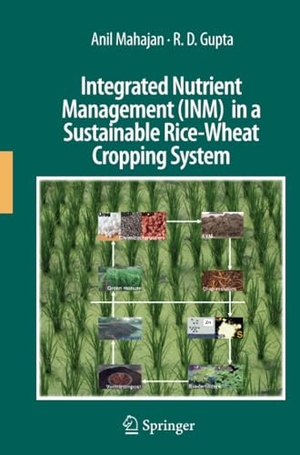
R. D. Gupta / Anil Mahajan
Integrated Nutrient Management (INM) in a Sustainable Rice-Wheat Cropping System
- Springer Netherlands
- 2010
- Taschenbuch
- 300 Seiten
- ISBN 9789048182169
Agriculture is the main occupation in India and about 75% of its population depends directly or indirectly on agriculture for their livelihood. It is the dominant sector that contributes 18% of the gross domestic product. Thus, agriculture is the foundation of the Indian economy. The maximum share of Indian exports is also from the agriculture sector. As the population of the country is increasing trem- dously, approximately at the rate of 19 million every year over the existing popu- tion of more than 1 billion (approximately 1. 18 billion), the food grain production must necessarily be increased. This can be done by increasing crop production to
Mehr
Weniger
zzgl. Versand
in Kürze